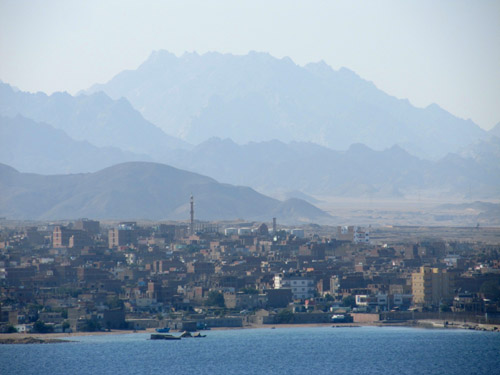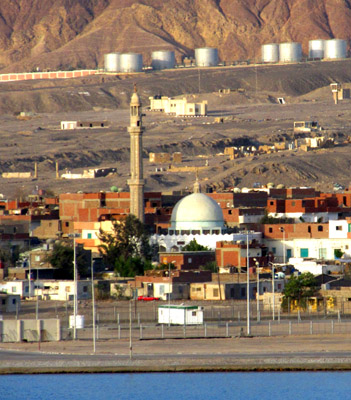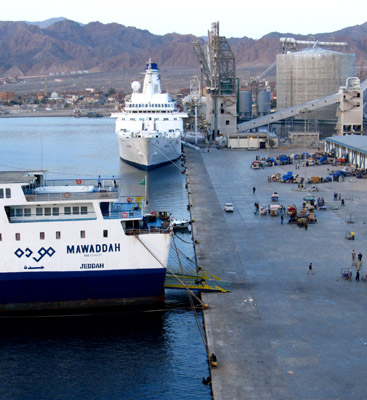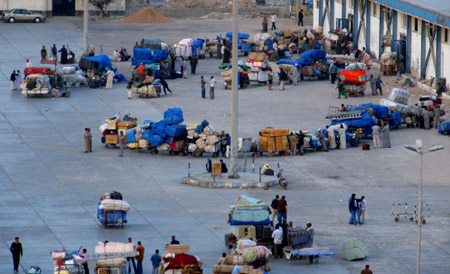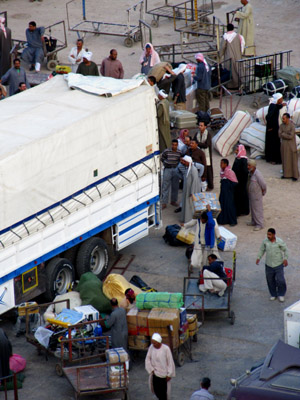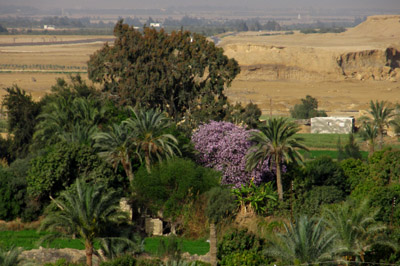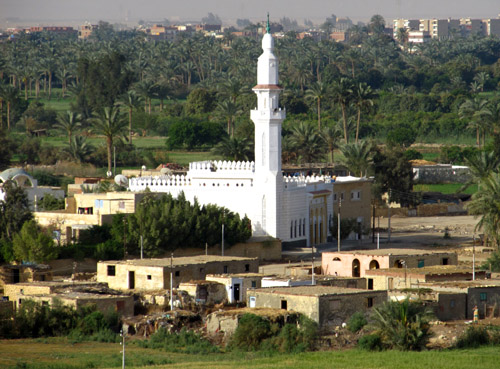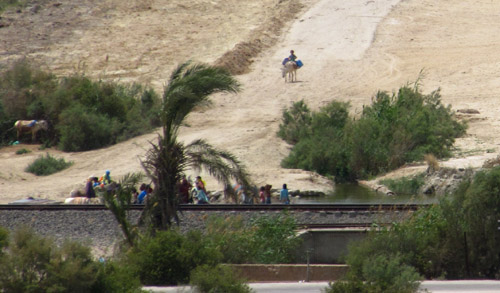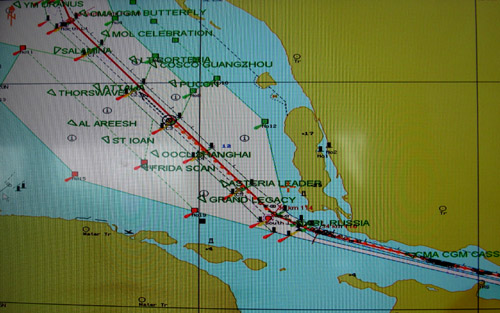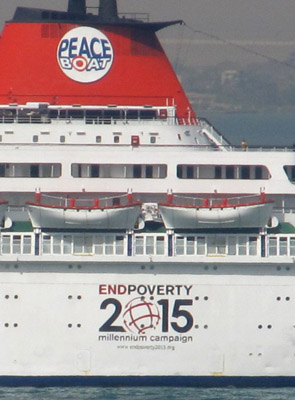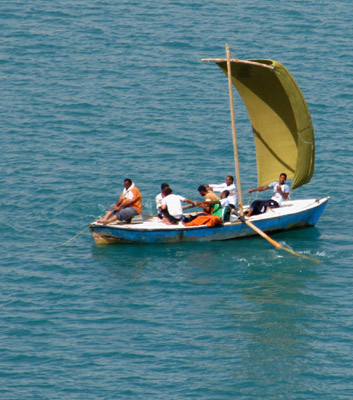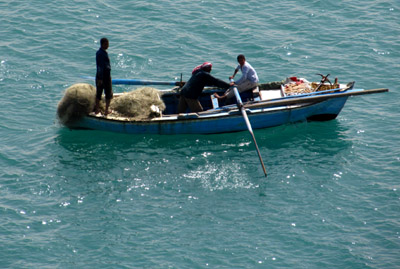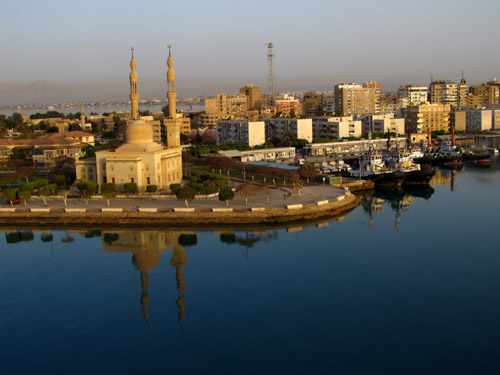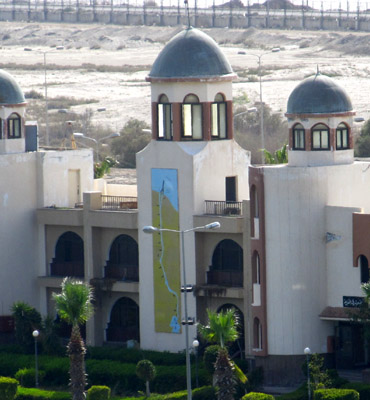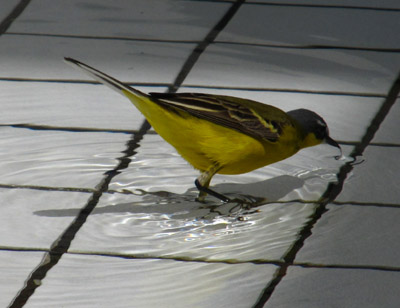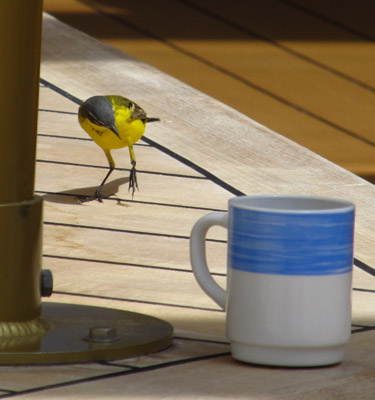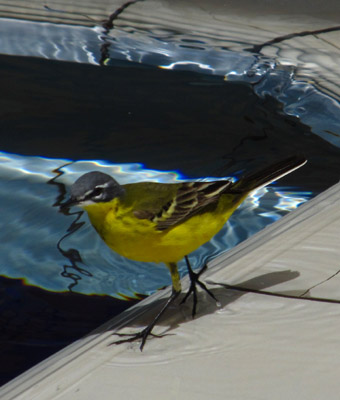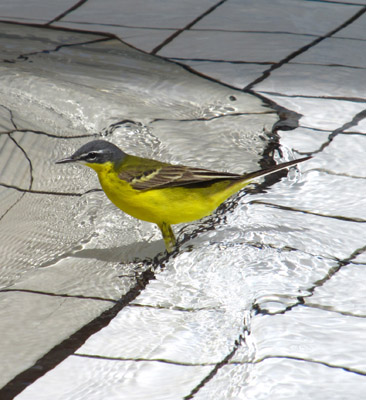|
We were first out by the gangplank and noticed the
wheat caught in damp or oily spots from last night's
operations--a bulk carrier was being loaded in our dock space. Soon all six of
the divers were gathered and started the
15-minute walk to the gate. Unlike Mumbai the officials did not
really look at our passports, although we are required to carry
them with us while in Egypt.
|
|
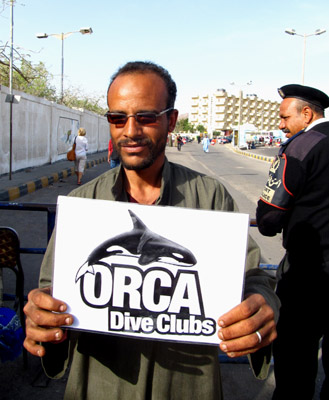 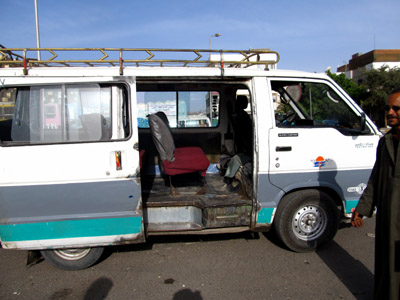
The transport guy had a sign, but his van was not the best we'd
seen. No seat belts and the side door was not closed while the van
was underway. We sat in
the rear seat.
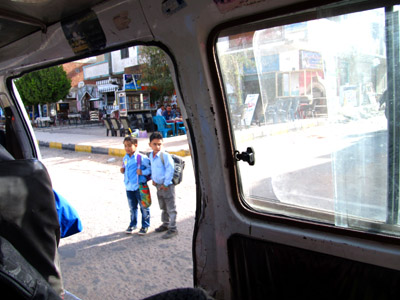 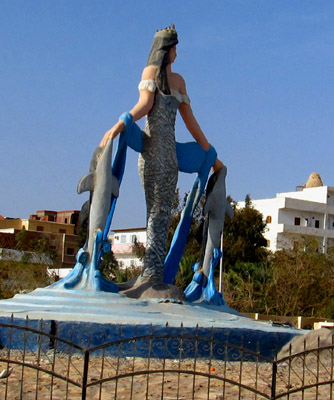
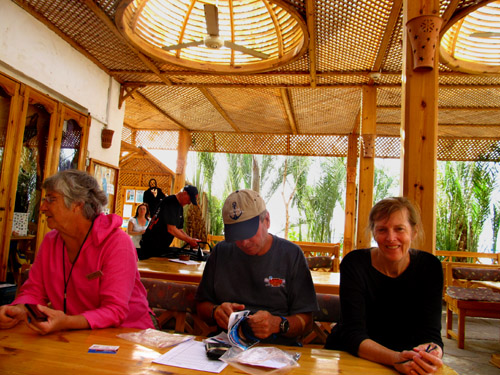
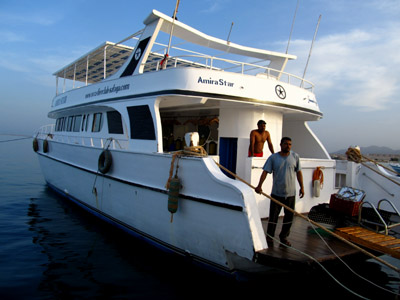
After a half-hour drive, we arrive at a very nice shop, Orca Dive
Clubs--it's run by German expats. The boat is luxurious compared to
some others on this trip. Our group of six joined a bunch of Germans.
The guides speak both German and English as well as their native
Arabic. Most of the Germans are
here for a week of diving and some were using rebreathers instead
of tanks of air.
 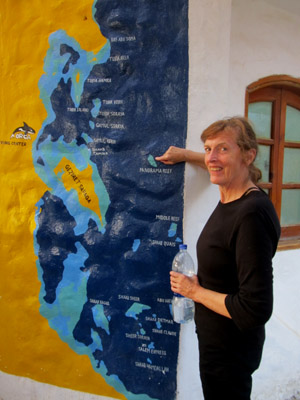
Our dive site is an hour boat-ride out to Panorama Reef, an atoll
that lies just below the surface of the water with coral-filled
walls on all sides. Both our dives were on this reef, but in
different areas. You could probably dive this reef all week and
not get tired of it.
 
Quasimodo, the hump-backed turtle, surfaced as we approached the
reef. Our boat tied up with several others, but they hung a sign
so we'd know which one was ours without having to surface.
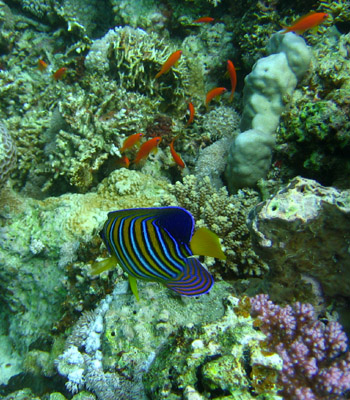 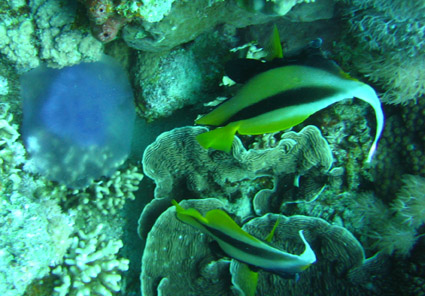
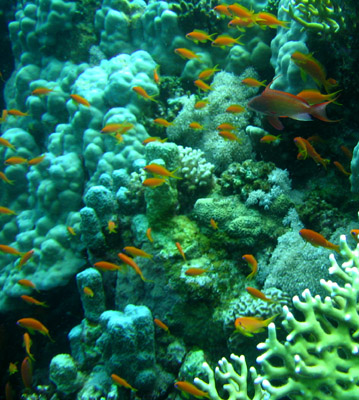 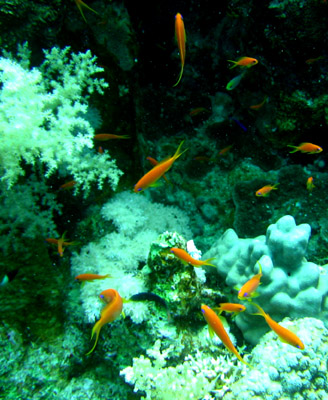
At times we felt like we were swimming in a goldfish aquarium.
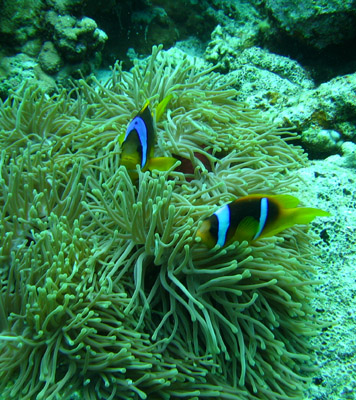 
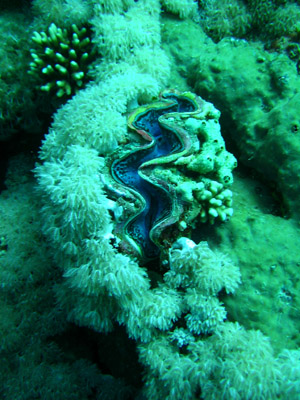 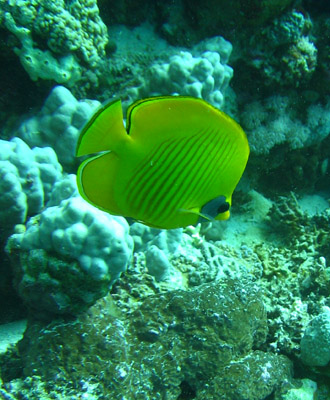
All in all, a delightful reef wall and good experience all around,
but since the water was a little chilly at 71 degrees, we had rented full-length
wetsuits.
 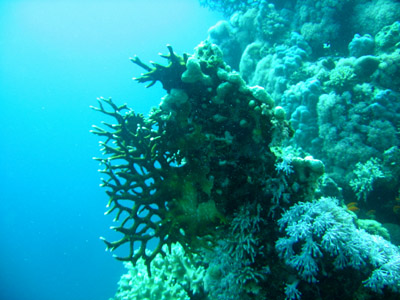 
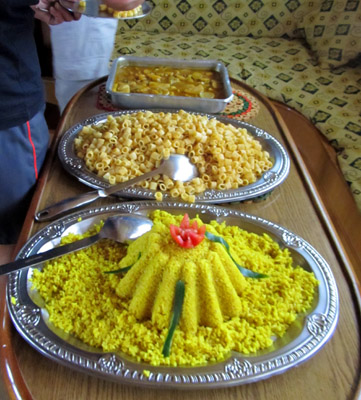
The chefs served a wonderful Egyptian lunch of eleven different
vegetarian dishes. And then we lounged
around for a couple of hours before our second dive. Normally,
we're allowed only about an hour interval before the next dive.
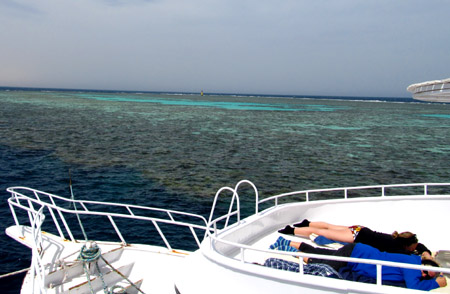 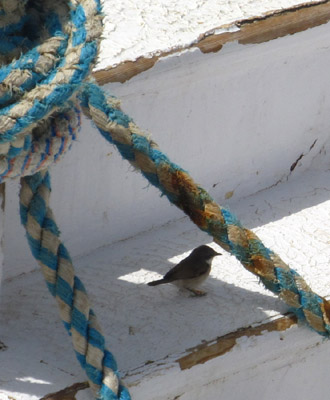
You can see the torquoise shallows across the bow of the next dive
boat--their divers were lounging, too. A little
perching bird came to visit us. 
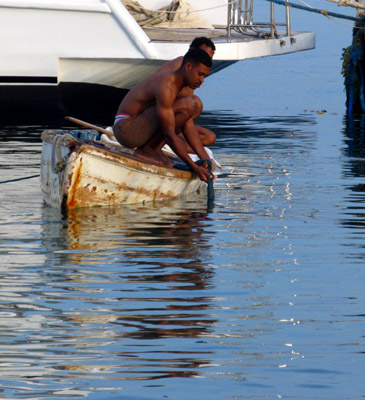
Once we got back to the shop, we had to wait for our transport, so
we took some photos around the shop. These two guys were
seining for minnows and some women were spending time on the beach
with their kids. 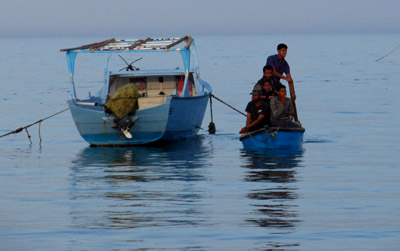
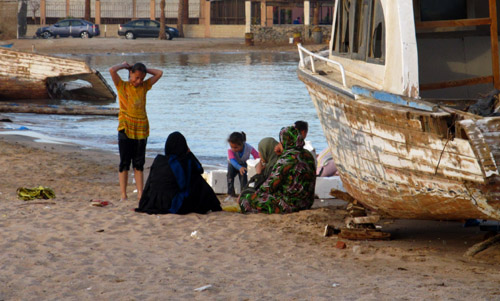
When our driver finally got there, it was almost 6pm! A long but
enjoyable day out on the water. Our passports were not checked as
we came in the gate,
just our room key cards. The ship was to be at docked until 11pm,
because of the long trips out to Luxor. But we'd seen enough
around the port to know that we'd probably not find Internet, so
we had dinner, showered, and rinsed our gear well. This is
the last diving on the trip. We agreed that we'd saved the best
for last!
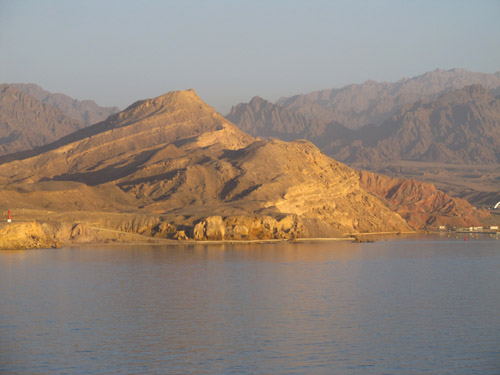
We anchored at Sharm el Sheikh the next morning on the eastern or
Sinai side of Egypt, which is on the Asian continent. Safaga was on the African
side and was our only stop on that continent. The mountains are
stunning.
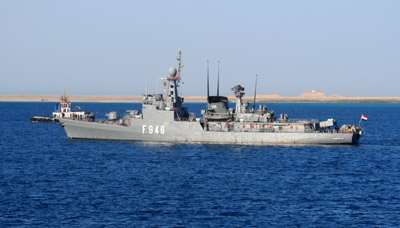
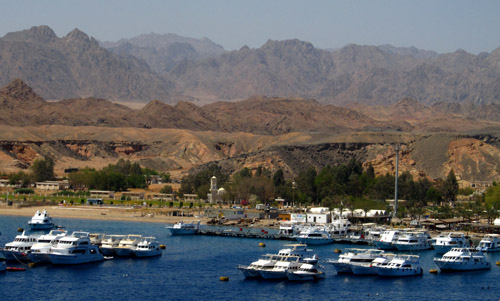
Some type of war ship came by after we were anchored. These smaller
boats are mostly dive or snorkel boats that streamed by us in the
morning. We didn't know where they were headed, but now we know
that it was to the many resorts to pick up paying passengers.
|
|
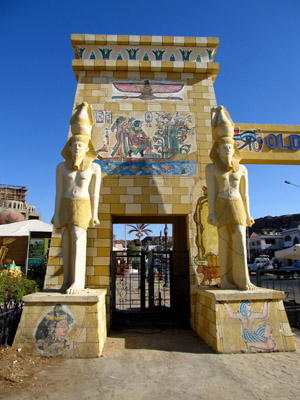
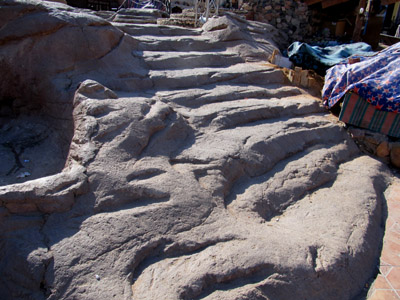
We found a taxi driver, Mustafa, to take us to the sites and the
town about 6 miles away from the port. The first stop was the
"Old City Market". It has not only hundreds of stalls,
it also has an amphitheater with waterfalls, carved stone steps, and lights with restaurants all around. Almost all the shops were
closed this early on a Friday morning, so we quickly returned to
the cab and decided that since it wasn't far from the port, that
we'd end our taxi ride here. So we were off...
|
|
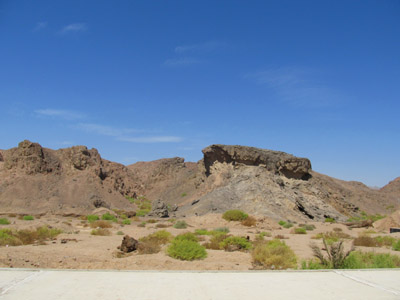
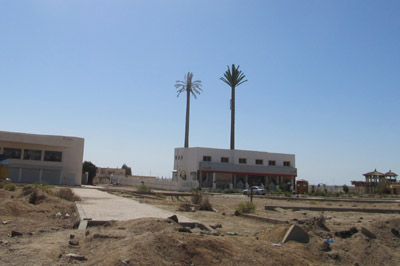
This land is quite arid and looks a little like SW U.S. Many
cell towers are disguised as palms.
 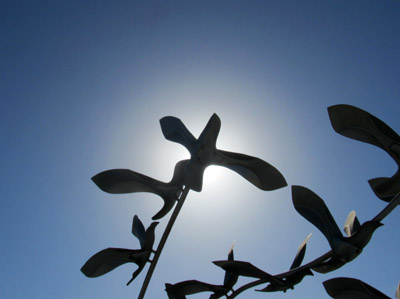
This monument includes an interesting bird sculpture and
nearby a pied crow poses for photos, too. Mustafa didn't have
enough English to tell us what it was for and the only English
lettering on the monument was the names. Next to the monument, we
get a good view of the water side of a resort.
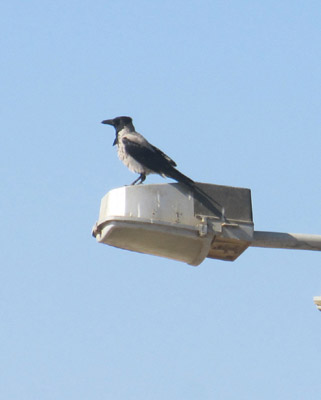
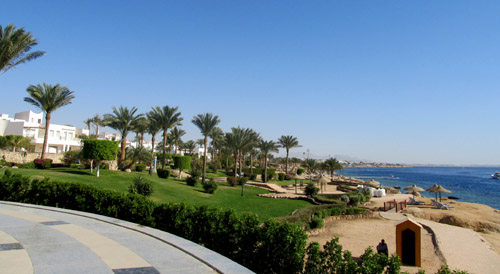
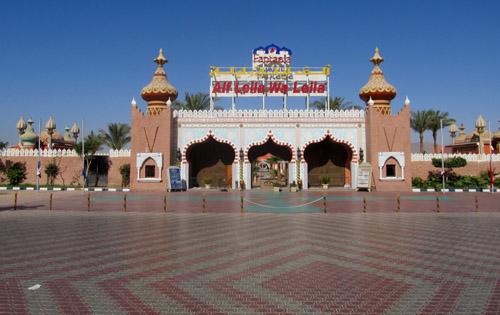 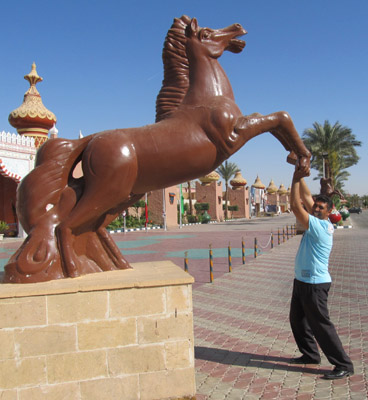
When we saw onion-shaped domes, we asked to stop, but this theme
park was closed. Mustafa posed for this silly picture--apparently
there are many horse-related events here.
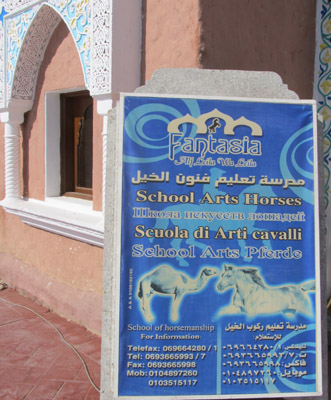
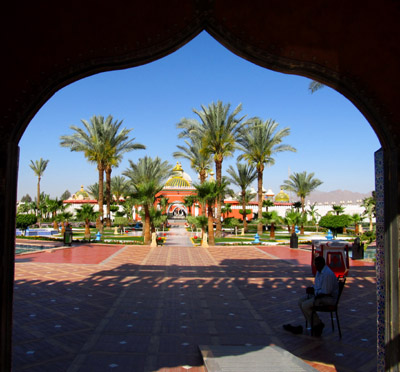
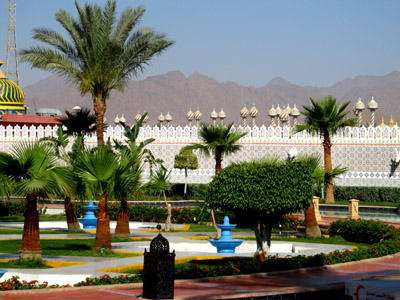
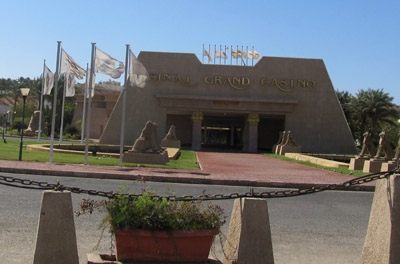
We didn't stay long. The clients for this park and the casinos
like this Sinai Grand Casino are probably mostly from the
surrounding resorts and there were plenty in operation and more than
a few that
had been abandoned.
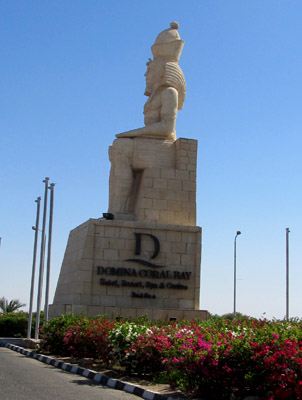
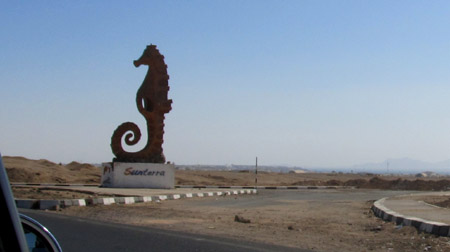
It's easy to tell which are working and those that are not...
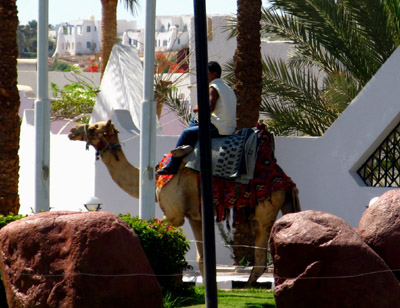
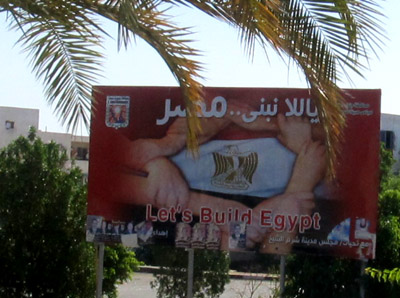
no camels. This area was, like many of the other places we've
visited full of contrasts, but it feels different here.
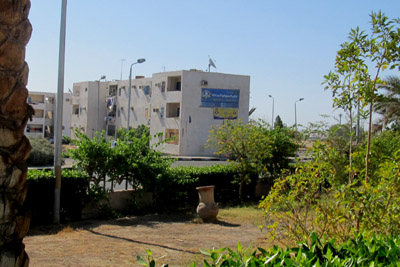
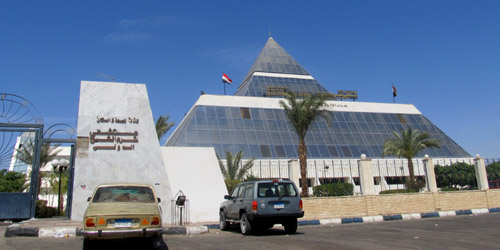
Laundry is hung to dry even in higher-end neighborhoods--with the
low desert humidity, things must dry quickly. The hospital is built
in a pyramid shape.
|
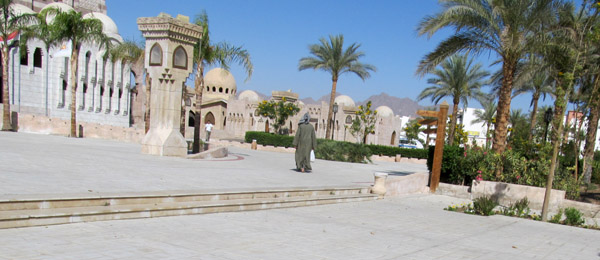
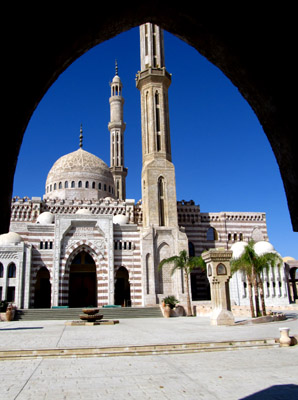
We went to several mosques, but this first one is the largest and most
architecturally elaborate...
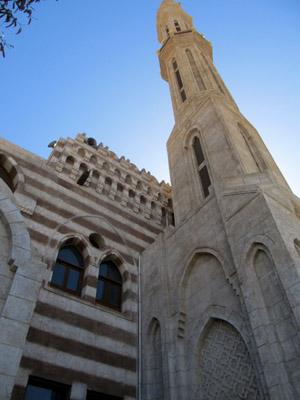 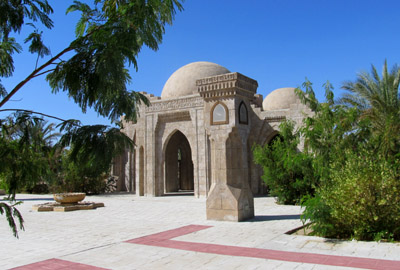
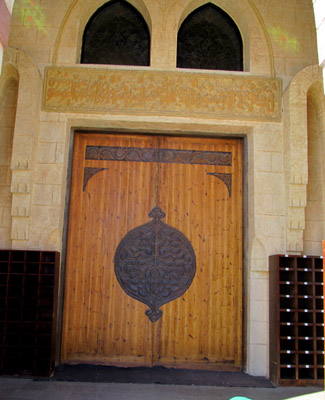 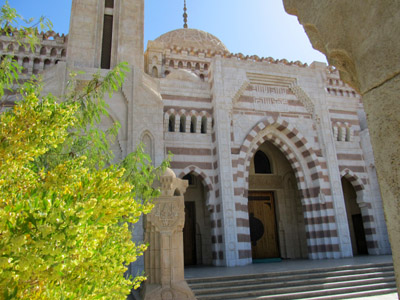
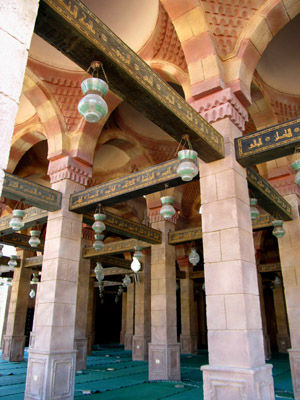
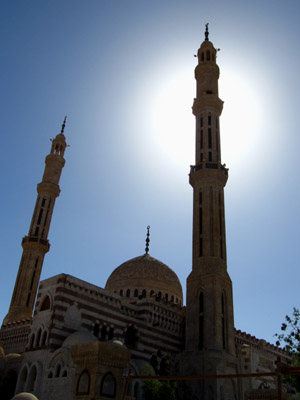
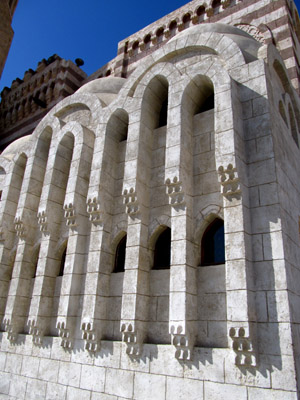
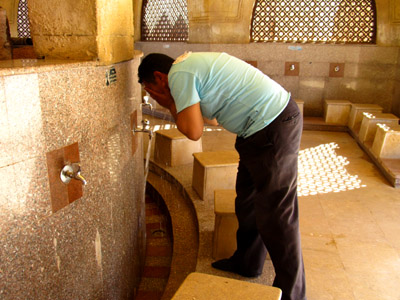
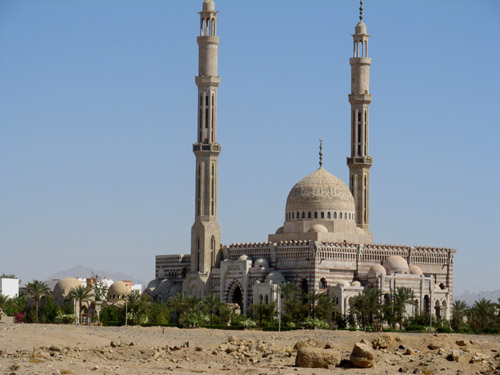
Mustafa demonstrates how to wash before a service. Often you wash your
feet as well. Before we visted other mosques, we stopped by a
Greek Orthodox church. It was Good Friday, so services were in
session this morning.
 
Listening to the chanting and looking at the photo of the priest, this
did not feel like Christian churches that we are familiar with.
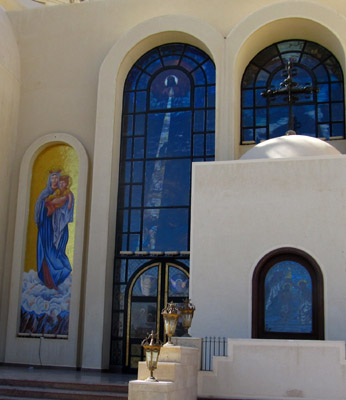

Behind the church is a garden area with a waterfall (that was not
turned on) and this lion sculpture.
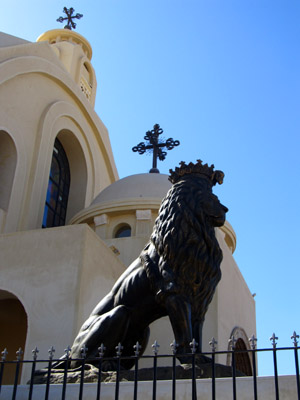 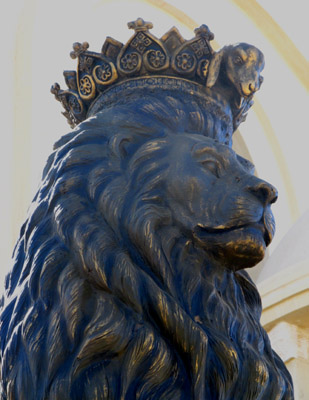
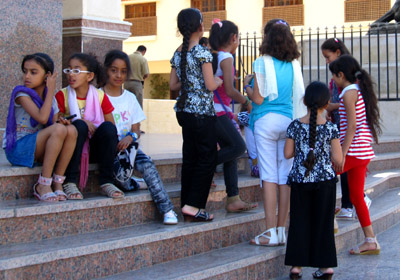 
Girls gathered on the back steps and facing the back of the church is
this odd Happy New Year message on a house. We don't know if it's
current or a left over.
 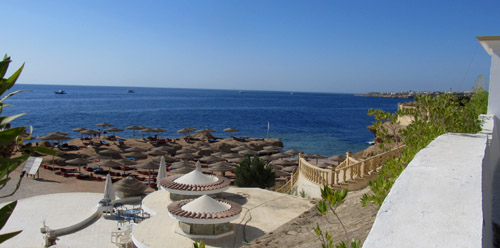
We then we stopped at this gate. It's the house where former Egyptian
president Hosni Mubarak
lives. Looking to the left of the gate over the water is a resort-like
beach and looking farther to the left is the great view across to the
mountains. I guess being deposed is not all that bad here.
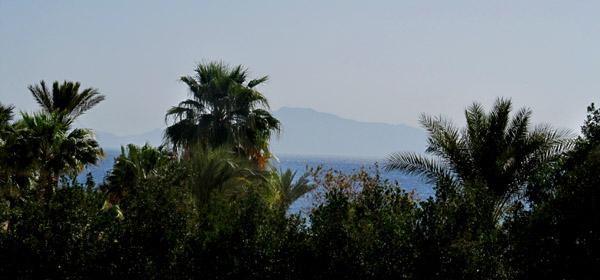
Then it was back to the mosques.
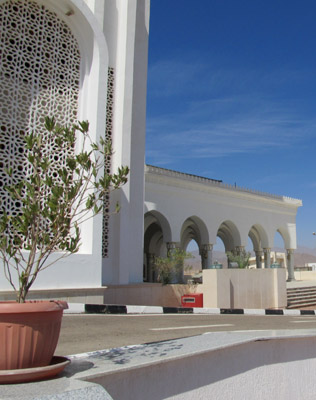
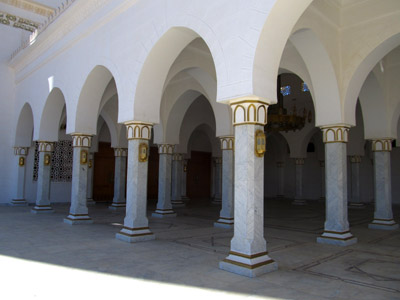
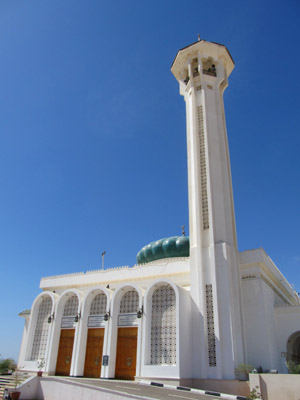
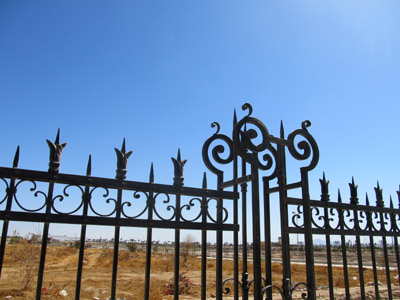
As we traveled along the road, there are wide spaces next to the
mosques with nothing but
sand.
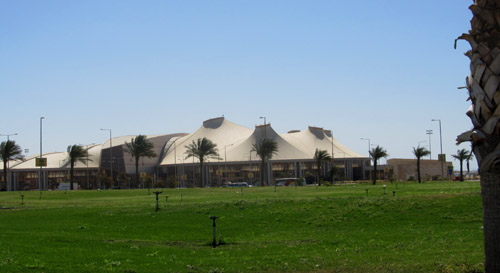
Then we saw this building, which is the airport terminal. Dean got out
of the cab to take a photo, but an armed guard came running out saying
that photos were not allowed and wanted Dean to show him the photo. This freaked out Mustafa and since it
had been more than an hour since we'd left and since we'd agreed on a
two-hour trip, we turned around.
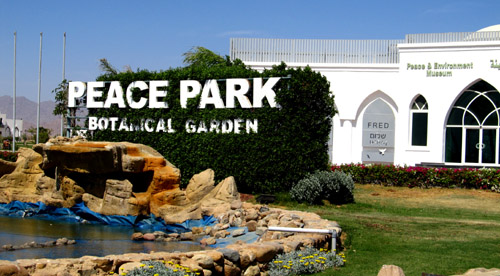
We'd seen this Peace Park/Garden on the way out. We stopped since it
was on the right side of the highway coming back.

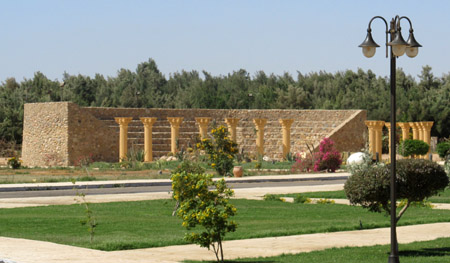 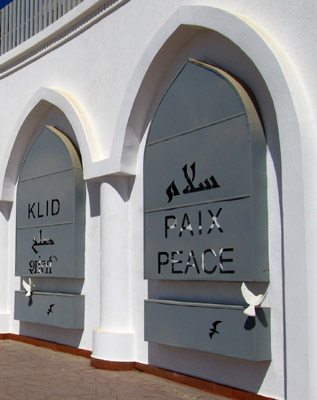
The big peace conference was held here on March 13, 1996.



It seemed important to us, but not another visitor was here. Maybe too
many unpeaceful activities since then have tarnished the glow of the
agreements made (in what we thought was good faith) at that time.
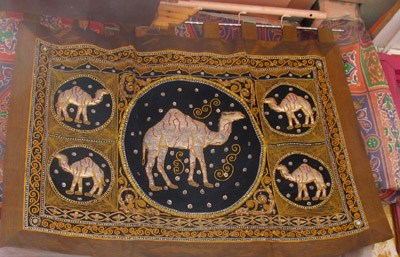 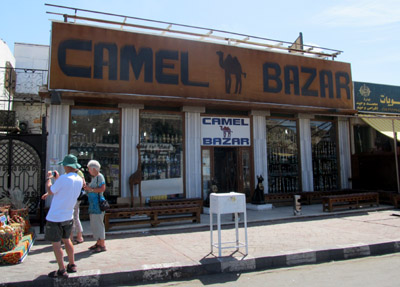
Then it was back to the market...
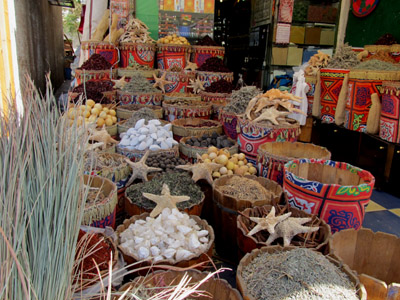 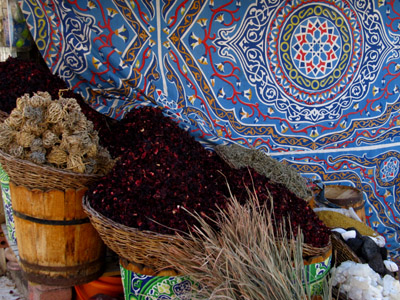
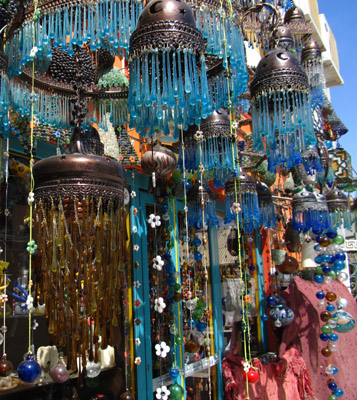
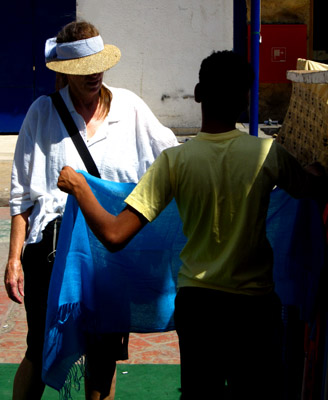
We did not purchase anything--the vendors were not doing any
discounting.
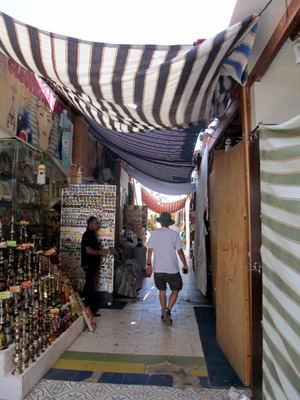
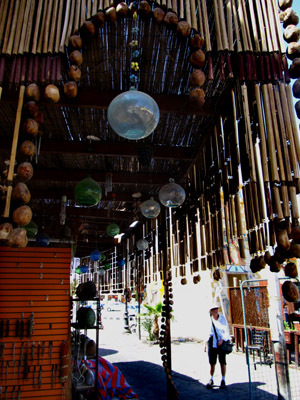
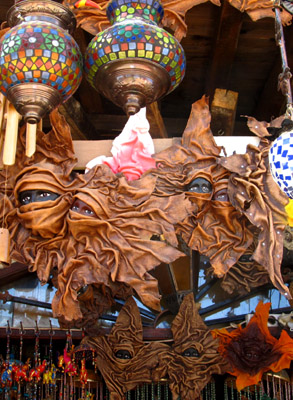
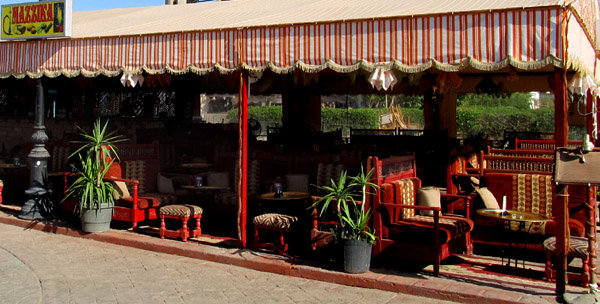
The bars seem more like lounges with Persian rugs, overstuffed chairs with
throws and pillows. Some like the one below with the hyena seem to
promise more...
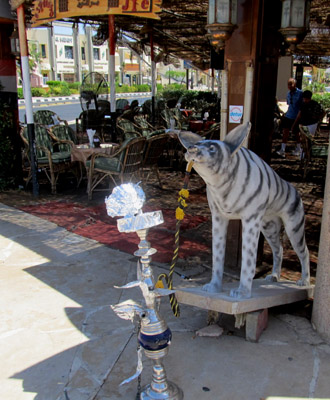 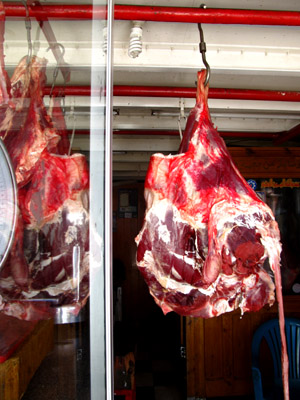
A quarter of beef includes all the organs...
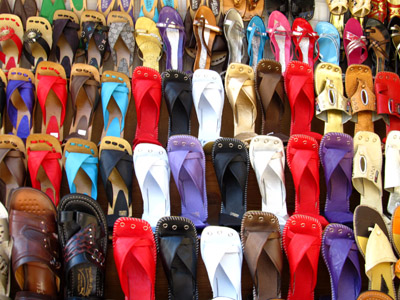 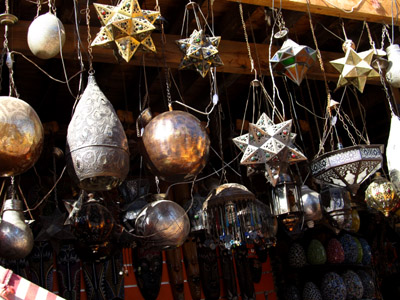
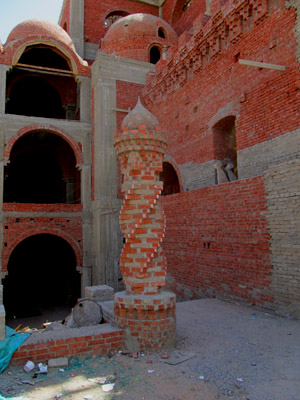
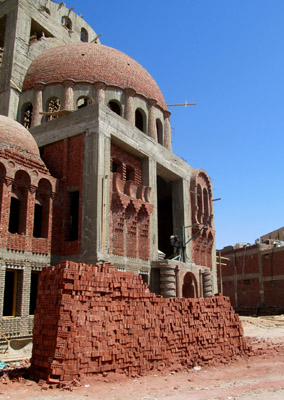 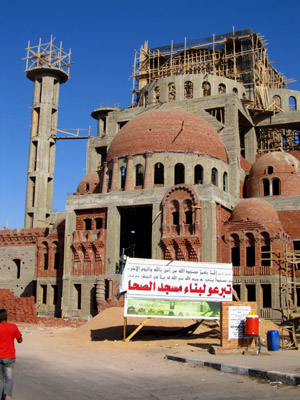
A huge new mosque is being built in the middle of the market using age-old
techniques.
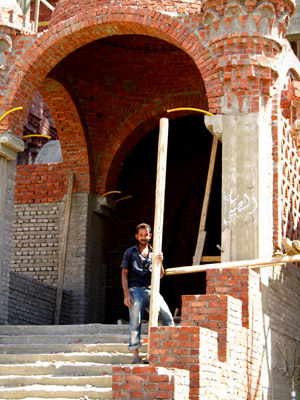 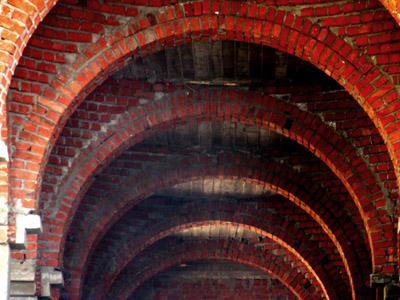
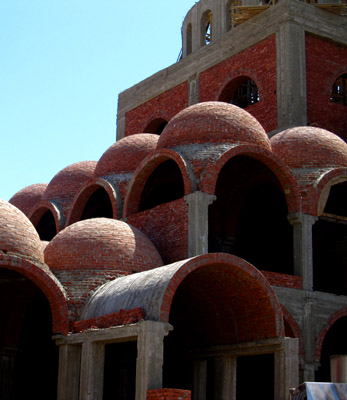
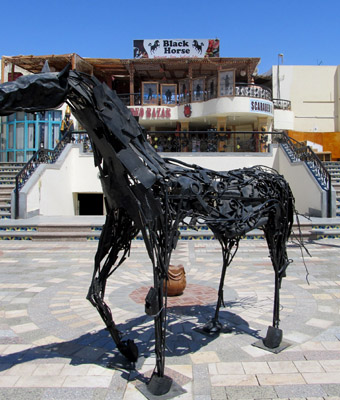
We leave the market and the street to the port is lined with more
shops and bars on one side and "Golden Sand" beaches on the
other with their fancy basket-like shade umbrellas.
|
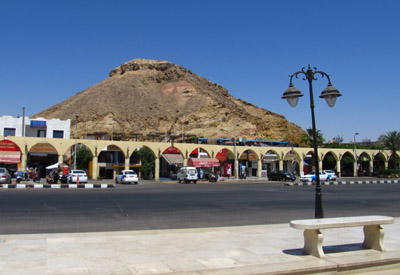
|
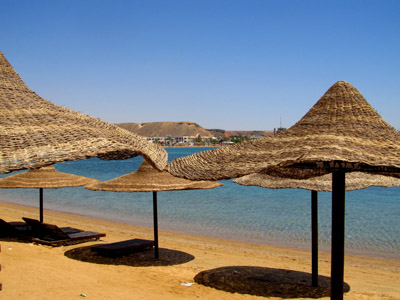
|
|
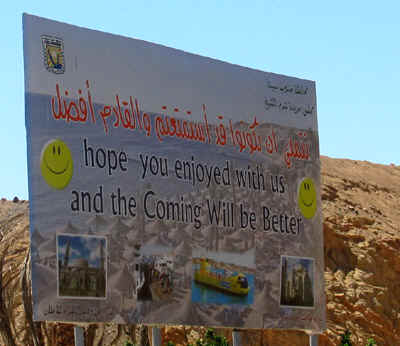
Just before the port gate, this sign made us
smile. The translator needs more work on his English and
grammar.
Tomorrow we go through the Suez Canal. The
Suez was routed through two natural lakes between the Red Sea
and the Mediterranean Sea. We will join a convoy of ships
traveling north and have to be at the canal entrance at 6:00am.
|
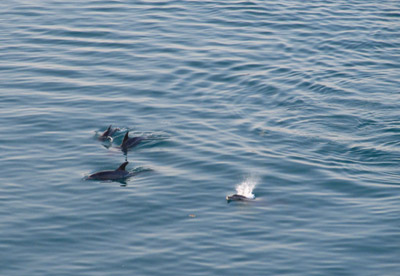 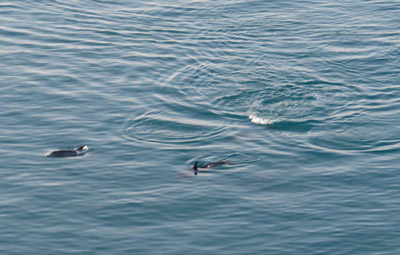
We were at the head of the convoy of 26 north-bound ships this morning. At the mouth of the
canal, a large pod of dolphins served as greeters. The land on
the left or western side is generally green and more populated, while
the eastern or Sinai side is mostly brown and barren.


The next two ships in our convoy follow us. The average fee for each
ship traveling through
the Suez is $215,000.
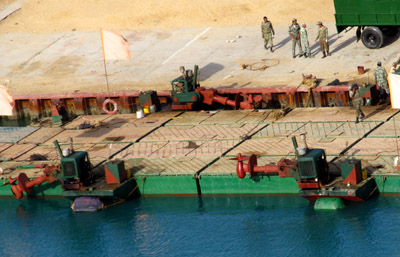 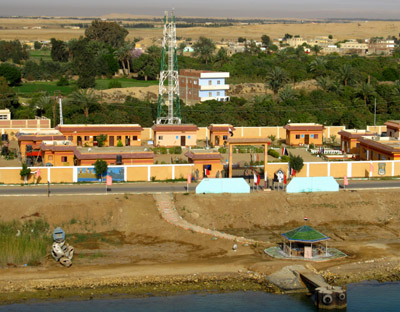
There is a strong military presence the whole length of the canal. Check
out the size of the engines on those green floating platforms, which may
be arranged as docks or even as a bridge across the canal.

 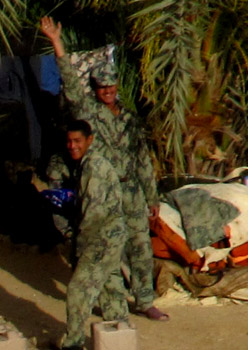
|
|
 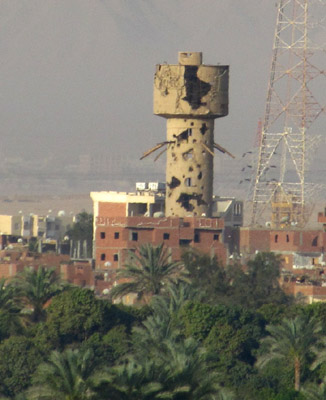
Some sections along the canal show evidence of war, while others look as
peaceful as any water-oriented community.
 
There are peace memorials that have been damaged in more recent wars. And
then there are war memorials like this one with a monument shaped like an
AK47 with a bayonet.
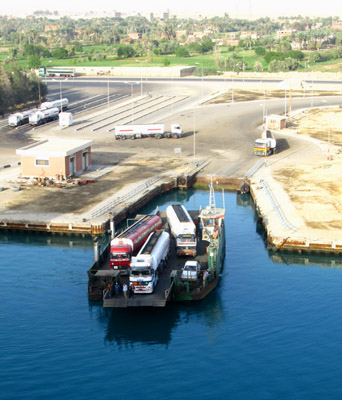 
There are 32 ferry crossings, one tunnel (See the welcome arch on the
Sinai side above.), and one bridge.

It's this bridge, built in the '80s, that determines the maximum height of
the ships passing through--we made it with many yards to spare. The design
of the suspension posts mimics some of the ancient Egyption
drawings.
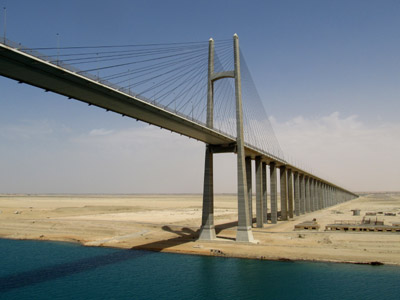 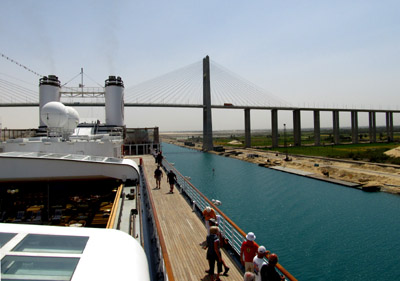

As we approached the Mediterranean, a small, but distinct, tidal wave with browner water moved
south and past us.
|
